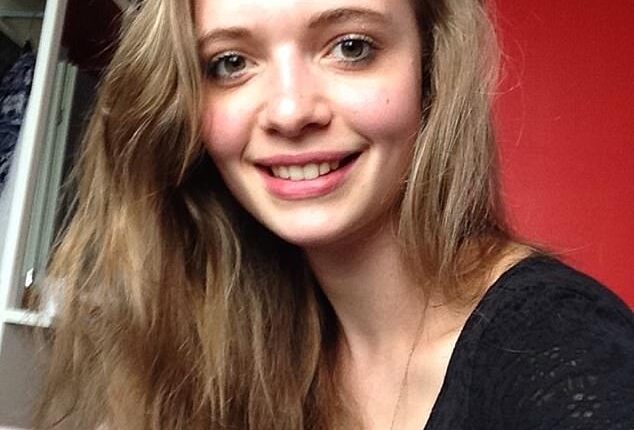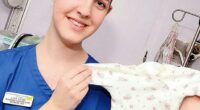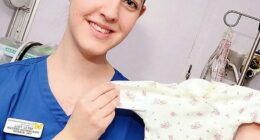The mother of a gap year student who vanished without trace ten years ago while on safari in Uganda says she believes her ‘beautiful, gifted’ daughter could still be alive – and blames local police for losing vital hours in the hunt for her.
Dutch medical student Sophia Koetsier, from Amsterdam, disappeared during a visit to Murchison Falls National Park on October 28th 2015.
The promising medic had been travelling with two fellow female Dutch students on what was supposed to be a reward safari adventure, after an internship at Lubaga Hospital in Kampala, Uganda’s capital.
The 21-year-old, who was diagnosed as bipolar, is thought to have been in the midst of a manic episode at the time of her disappearance. She was last seen heading to toilet facilities at the Uganda Wildlife Authority Student Center in Paraa, close to the banks of the Nile.
Sophia’s mother Marije Slijkerman, a Dutch Journalist, who was in Kampala visiting her daughter at the time of her disappearance, has dedicated the last decade trying to piece together just what happened to Sophia.
She tells the Daily Mail not having answers has prolonged her torment, saying: ‘Where a death is a full stop, a disappearance is a comma, and you don’t know what comes after that comma, if anything.’
She maintains she has been failed by investigators and their assumption that the student is likely to have lost her life to a wild animal has been dismissed by experts – no human remains or blood were ever found.
Speaking to The Daily Mail, Marije says her family will never give up on the idea that they might see her again, adding: ‘I believe in miracles’.

Dutch medical student Sophia Koetsier, 21, from Amsterdam, hasn’t been seen since she vanished during a visit to Uganda’s Murchison Falls National Park in 2015; the fate of the promising medic, who was bipolar and suffering a manic episode at the time of her disappearance, has tormented her mother, Marije Slijkerman, since
What has been extraordinarily difficult, she adds, is knowing a series of fundamental errors were made in the hours after the last sighting of Sophia, with the scene not closed off and vital witnesses not questioned.
The first sign that Sophia’s case was being mishandled came within 24 hours of her going missing.
Marije, travelling from Kampala, was on the scene within 24 hours, when Sophia’s water bottle, found five to six yards away from the river bank, was the only clue.
However, other key items, including one of Sophia’s boots, wallet and underwear, were later recovered at the same site but, crucially, not for another day. Marije says the bizarre time lapse first sparked her suspicions that the investigation had already gone awry.
Marije, 68, says: ‘This whole trail of items, spread out over about 40 metres along the river bank, was found very near where the bottle was found the previous day. The question is, why they weren’t found together?’
Sophia’s mother says that one, single moment was an immediate red flag – raising suspicions that the student’s personal items may have been ‘placed’ there later on.
She explains: ‘Rangers are trained to see things that the average person does not immediately see. The 24-hour gap between finding that bottle and the trail of items calls into question if these items were actually there, or placed there at a later time.
‘Did the search party that found the bottle spend the rest of the day sleeping? This is one of the biggest question marks for us.’

Sophia’s mother Marije Slijkerman is convinced her ‘beautiful, gifted’ daughter could still be alive – and blames local police for losing vital hours in the hunt for her

Lost hours and days following Sophia’s disappearance could have made all the difference to Sophia’s case, her family maintain (The medical student pictured during her internship)

Sophia’s mother Marije, a Dutch Journalist, has questioned search efforts, saying personal items appeared ‘placed’ to create a pseudo ‘scene of the crime’

Marije and Sophia, in Kampala, at their last dinner together, on Wednesday 21 October 2015
Her fears were further heightened when Marije was finally taken to what police unnervingly kept calling the ‘scene of the crime’ – an area of the river bank strewn with Sophia’s things.
It felt, reflects Marije, entirely staged, ‘like a decoy’ that had been set up.
One day later, yet more of Sophia’s belongings were found scattered along the river bank; her sunglasses, money, one of her boots and the two insoles of her boots.
Part of her thin cotton trousers, ripped to shreds in bushes and scattered across tree branches were also ‘found’, very near where the water bottle was found the previous day.
Her underwear, pulled over a branch, four to five metres high up in a tree, also mysteriously appeared.
Again, there was no sign of blood on any of the garments and no indication there had been a struggle.
Marije says: ‘After hearing what they had found I immediately wanted to see it. At first they wouldn’t take me there but several hours later, I was taken to the “scene of crime” as they kept calling it.
‘From the very moment I stood at that riverbank and saw those items I felt that something was really amiss, it felt wrong, like a decoy.
‘I photographed all the items. When showing the photos to people later I would always hear: “This is staged, this is a manipulated crime scene”.’
Marije also says she discovered there had been a less-than-urgent response after her daughter was first reported missing.
A ranger on the scene at the time told her ‘the response was not fast’, saying when the water bottle was found, investigating officials mainly sat around to discuss what to do.
‘Senior management of Uganda Wildlife Authority (UWA) and the police did not arrive until Friday [a day later], which was the day I arrived.
‘That whole initial investigation left a lot to be desired. They never made a list of all those present at the Student Center, for example.’

Before her disappearance, Sophia had been travelling with two other Dutch medical students on what was supposed to be a safari adventure to conclude their internship at the Lubaga Hospital in Kampala, Uganda’s capital city

Sophia enjoyed her time working at the Lubaga Hospital in Kampala (pictured with nurses), but her mental health suffered during the trip, culminating in a manic episode six days into her safari trip
When forensic police arrived – known locally as ‘socos’ – three days after Sophia disappeared, they ‘cordoned off the area, apparently unaware of, or ignoring, the fact that many people had been walking around there already, including myself.’
Murchison Falls National Park is home to many dangerous wild animals, including crocodiles, hippos, lions, leopards and elephants, but attacks on humans are rare.
When Marije raised the question that her daughter could have been harmed, not by a wild animal but by a human, her concerns were dismissed. She was told: ‘Humans don’t go there’.
However, she tells the Daily Mail: ‘This is disputable, I found out later. I have walked there a number of times now, you always find empty plastic water bottles and there is a ranger path which is maintained.’
At the time of Sophia’s disappearance, the UWA Student Center housed a large number of UWA instructors and a large number of Uganda People’s Defence Forces (UPDT) soldiers participating in a training program.
Just two kilometres north, there was a camp accommodating 400 Uganda Wildlife Authority trainees, which means Sophia and her friends were not isolated in the bush.
The majority of those staying both in the camp and in the Student Center faced no scrutiny; they were never interviewed and their movements around the time of Sophia’s disappearance remain unaccounted for.
A DNA test by Independent Forensic Science Services (IFS) of Sophia’s recovered personal items confirmed male DNA on the items, however, no match has been found.

Sophia extended her trip to travel around the country she’d fallen in love with ahead of returning to Europe

Last sighting: Sophia went to the restroom at the Uganda Wildlife Authority (UWA) student center on the evening of October 28th… and was never seen again
Other holes in the investigation continued to emerge. Marije claims the search dogs initially used didn’t have Sophia’s scent. After her repeated insistence, they were eventually given her daughter’s smell.
She said: ‘A Dutch dog trainer told me that indicated to him the dogs hadn’t been trained for “scent and search”, and would simply follow the freshest scent they smell. And there were a great deal of those.’
With many overlapping scents and rain the night Sophia vanished, their path to the riverbank was likely unreliable.
In the decade that has passed since she last held her daughter close, Marije has fought for closure, returning to Uganda 28 times, launching appeals and keeping pressure on both the Dutch and Ugandan authorities.
One visit unearthed a crucial lead, when a retired army captain from the UPDF, claimed he and another colleague of his both interacted with Sophia on the night she disappeared. One of the officers, who has not been named, denied any contact with Sophia and was never questioned by authorities.
Marije says: ‘In the course of time, I have collected information myself and it turned out there were quite a lot of people at and near the location where Sophia was last seen.’
She discovered that two men had spoken to Sophia in the hours before she disappeared – but their accounts contradicted each other.

The search goes on: Sophia’s family have urged anyone with information about the student to visit the website they set up in her name, Findsophia.org
‘Only one of these two men had been interviewed by the police. I came across the name of the other one in the first man’s police statement and immediately felt it was important to talk to both of them.
‘It took quite some time before I managed to find them. One had no problem speaking with me and appeared sincere and honest.
‘The other one had never been approached by police and was quite reluctant to speak with me. However, I did manage to meet with him and was very surprised to hear that he contradicted the story of his then friend and colleague.
‘I shared my findings with the police but do not have the impression it was thoroughly looked into.’
What did the days before Sophia’s disappearance look like?
After her internship ended, she had wanted to explore more of Uganda with her two fellow interns and local tour guide, Michael Kijjambu, before her return home to The Netherlands.
Sophia’s last journal entry on October 22nd, read: ‘I sincerely regret my stay here is over. All the people in the hospital are so sweet. I will really miss them and hope to be back one day. Who knows, as a doctor of tropical medicine?’
After the internship, the three women went on a two week trip through Uganda – six days in, Sophia disappeared.

The student had been diagnosed with bipolar as a teenager but had infrequent manic episodes and had never ‘been held back’ by her condition

Two days after Sophia’s disappearance a whole trail of items belonging to her were found along the river bank, including her hiking boot

Search teams also found a number of torn pieces of textile, with Sophia’s underwear discovered in a tree branch


These pieces are part of a pair of trousers Sophia owns and likely was wearing when she disappeared. A colourful African bag was also found nearby, which was something Sophia had bought in a gift shop during her trip

The red insole of one of her hiking boots was also discovered in shrubs along the river bank
Marije revealed her daughter was in good spirits and very excited about this new adventure- but her mental health had deteriorated during the trip.
She explained: ‘That afternoon Sophia had called me, around 2.30pm. The connection was bad but she told me she was on a boat and very much enjoying the trip. She sounded calm and normal. I had no inkling of something being wrong.’
By that evening, however, Sophia apparently started exhibiting behavioural changes, which her family think were linked to her bipolar diagnosis, which can lead to manic episodes.
Marije explained: ‘At 6.30pm I was called by one of her travel companions who told me Sophia was not well and they wanted to take her back to Kampala the next morning.
‘The unusual behaviour the companion described made me understand Sophia was entering a manic episode.
‘As I know my daughter to be very strong-willed, I told the companion not to tell Sophia they intended to abort the trip. She would not want that, she would “resist, argue with them, she may walk off”, were my words.
‘I then discussed with my Airbnb host how to get Sophia back to Kampala without getting suspicious. I tried to call the travel companion back but couldn’t reach her.
‘Finally, just after 9pm she called me [on October 28th] and told me Sophia had now been missing for some 2.5 hours.
‘It felt like the floor underneath my feet disappeared. According to the itinerary Sophia had shared with me, they were supposed to be in a town… but they were in a National Park.’
Authorities have suggested Sophia’s ‘mental problems’ may have been responsible for her disappearance, something her mother finds difficult.
A bipolar manic episode is a period of unusually elevated behaviour, according to the NHS. Symptoms include euphoria, decreased need for sleep, racing thoughts and risk-taking behaviour.
Marije says: ‘It’s all speculation of course but had Sophia not developed a manic episode, we do not believe this would have happened. She needed care which was not available.

Authorities suggested that Sophia’s bipolar diagnosis may have played a role in her disappearance, something her family dispute
‘I don’t think she was off her medication but she took a small so-called ‘maintenance dose. She was getting so many new experiences and impressions and not getting enough rest to digest all of this.
‘Five days a week she needed to be up early to work in Lubaga Hospital, where lots of things that moved and affected her, were happening too.
‘Rest is essential for Sophia, but where at home she has her own room in a quiet neighbourhood, in Uganda she lived with some 15 young people in a house.
‘As she wrote in one of her weekly reports “it’s fun to live in a student house but it’s never quiet”.’
She says her daughter’s illness, diagnosed when she was 16, had never set her back ‘in school or study. And she always had a job too’.
As the investigation progressed, police started giving weight to the possibility that Sophia might have taken her own life after they found out about her bipolar diagnosis.
However, evidence in the case, has suggested her trousers could have been cut with a knife or scissors. Footprints were never found around the area she disappeared leading some to believe, whoever might have taken her covered their tracks.
Marije believes her daughter’s manic episode may have led her to wander off and possibly fall into the hands of someone holding her against her will.
She said: ‘We have experienced Sophia going through a manic episode a few times. They never last long, and she recovers quickly, but it is not always easy to deal with her in such an episode.
‘She doesn’t like it when people worry about her, tell her to slow down, take more medication, get rest. Manic people usually feel great.
‘This can cause tension with the people close to her. Sophia then prefers the company of people who do not, or barely, know her and who will see her as this very energetic, fun person, who loves to party.
‘We think it is possible she may have wondered off and encountered people who seemed ok but turned out not to be ok. What happened then we do not know.’
Does she think she’ll see her daughter again? ‘If nothing is certain, everything is possible. To me it doesn’t feel she’s gone. I am the first to admit it’s hard to say where maternal instinct ends and wishful thinking starts, or vice versa, but I have heard of mothers who instinctively felt their missing child was no longer alive.
‘Sophia is very strong, both physically and mentally. If she is alive and free to act, it’s hard to understand why she wouldn’t contact us. So, if alive, we don’t think she’s free.’
Marije questioned why the tour guide took the three girls to the poorly secured UWA-run Student Center on the night before she went missing, despite knowing Sophia was unwell.
She said: ‘The travel companions had informed him they had to break off the trip and travel back to Kampala the next morning. The Student Center, owned and run by UWA, has no security, unfit for tourists and very cheap.
‘The three girls had paid their guide a flat rate for the whole trip, including all accommodations. Only food and drink were excluded.’
Months later, the family learned the guide had been advised the day before she disappeared not to continue traveling with Sophia, yet he made the decision to stay in an isolated, unsuitable location.
In June, Sophia’s tour guide Michael Kijjambu went on trial after been accused of working as an unlicensed tour operator at the time of Sophia’s disappearance.
However, he claimed those licenses were not required until shortly afterward Sophia’s disappearance.
There were suggestions during the trial that Michael may have been negligent and should not have taken Sophia into the park at all.
Stephen Nyadru, a tourism officer stationed at Kidepo Valley National Park, took to the stand to say he warned Kijjambu to cancel the trip after Sophia was spotted acting erratically at the accommodation.
In court, Nyadru said: ‘I told him to take the girl to Lacor hospital in Gulu and then return to Kampala, he agreed and said he would sleep in Gulu.’
He claimed Sophia broke park guidelines by playing loud music at the reception. Another park member claimed Sophia was banging on panels at 4am, according to Monitor.
Kijjambu did take the girls to Gulu but he decided to continue the trip the following day, despite Sophia’s condition worsening.
Marije said: ‘Months later, we found out that the tour guide had been advised not to travel further with Sophia, on Tuesday, the day before she disappeared.
‘We then learned he had continued the trip but decided to spent the night in Gulu, the largest town in Northern Uganda. Initially the plan was to spend that night in a smaller town but ‘Gulu was a more resourceful town’ as he said.
‘In light of that it is hard for us to understand why the next evening, when it was very clear Sophia was not ok, he took the three girls to the least resourceful place one can think of. Even though the travel companions had informed him they had to go back to Kampala the following morning.’
However, last month the Buganda Road Chief Magistrate’s Court formally withdrew criminal proceedings against Kijjambu.
Chief State Attorney Joan Keko informed the court that she had received instructions from the Director of Public Prosecutions (DPP) to discontinue the matter.
Ms Keko told Monitor: ‘I have instructions from the DPP to have this matter withdrawn.
‘I have a withdrawal form with me dated September 19, 2025, in respect of the accused person in court, Michael Kijjambu, and it is signed by the DPP Justice Jane Frances Abodo. I pray to tender it in.’
Reflecting on ten years of searching for Sophia, Marije admitted it’s becoming increasingly painful to return to Uganda, but she remains determined to uncover the truth about her daughter’s disappearance.
She explained: ‘I often say I went there once because I wanted to, and now 28 times because I have to.
‘It seems to get harder and harder to keep travelling to the country that took Sophia from us and won’t reveal where she is. It’s a difficult country, very hard to get things done.
‘I have befriended a handful of people there who help where they can. They make those trips somewhat less difficult.’
She reflects: ‘Although we are aware that this mystery may never be solved it is very important that our Sophia is not forgotten.
‘The more people in the know, the better it is. It also increases the chance that we may find answers one day, and most of all, have Sophia back so our lives can be normal again. Miracles do happen and I am a staunch believer in them.
‘We are grateful to all those who keep helping and supporting us, in whichever shape or form. It means more to us than we can say.’
The Deputy Director of the Criminal Investigation Department in Uganda, Mr. Womanya, was called back from retirement to act as the Deputy team leader on a new investigation into Sophia’s disappearance in April of 2022 but he was sidelined after several months.
Speaking to The Daily Mail he revealed that investigators had made ‘quick decisions initially that Sophia had drowned without looking at all the evidence.’
He added: ‘That’s when we decided we had to reopen the investigation to find out what actually happened.’
Mr. Womanya believes that if the case had been thoroughly investigated from the outset, it would have been easier to determine the circumstances surrounding Sophia’s disappearance.
He added: ‘In such cases time factor plays a very important part especially getting fresh evidence from the witnesses.
‘Otherwise three years down the road, some witnesses’ memory was eroded and others could not be traced. Forensic evidence also was not easily retrieved.’
When asked about his own theory regarding Sophia’s disappearance, he said: ‘From the pieces of evidence gathered so far, I believe she could have either drowned in the River Nile or pulled into the river and eaten by the crocodiles, whose habitat is close to where parts of her clothes were found.’
However he admitted he can’t explained how Sophia’s underwear and shredded trousers ended up wrapped around bushes and high up in a tree.
He said: ‘In the absence of any other probable supposition of what could have happened, the close conclusion, though not with all certainty, revolves around the waters of River Nile.
‘However as earlier investigations were done at the very time when she was reported missing, there is a possibility that there could have been a different finding.
‘Remember after three years when the case was reopened, the river had expanded its boundaries and even the location where the pieces of clothes were found was no longer in place.
‘All are possibilities in the absence of any other plausible explanation about how she disappeared.’
The Daily Mail has reached out to the Uganda Wildlife Authority Communications Office and the Uganda Police Force Communications Office for comment.
If you have any information about Sophia’s disappearance please contact her family via Findsophia.org









